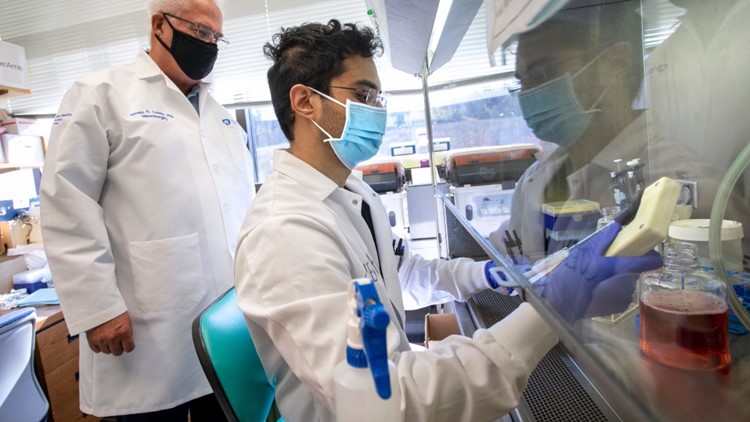HERSHEY, Pa. — Researchers from Penn State College of Medicine are participating in a $10 million project to better understand why males and females have different survival rates with a common and deadly type of brain cancer, the college said Monday in a press release.
The investigators hope the study results can be used to develop new therapeutic approaches for treating the most severe form of brain tumor, glioblastoma, the college said.
Glioblastoma patients have a median survival of 12-14 months and only 5% of patients are expected to survive beyond five years, heightening the need for improved therapies. Researchers previously determined that this type of brain cancer is more common in males than in females and that females tend to have an improved survival rate of up to 10 months.
James Connor, distinguished professor of neurosurgery, neural and behavioral sciences and pediatrics, will lead Penn State’s involvement in the project, sponsored by the National Cancer Institute, the college said.
Justin Lathia of Cleveland Clinic’s Lerner Research Institute and Jill Barnholtz-Sloan of Case Western Reserve University School of Medicine are the principal investigators of the multi-institution research team which includes researchers from Washington University School of Medicine and the Translational Genomics Research Institute.
The group will investigate the genetic and metabolic differences in cellular processes associated with different glioblastoma outcomes in males and females.
For most of his career, Connor has studied how iron metabolism in brain cells affects neurological disease. He began investigating how iron regulation affects glioblastoma outcomes after collaborators on the current project discovered that there were differences in the activity of an iron-related transport protein in male and female glioblastoma tumors.
“Cells cannot thrive if they lack adequate iron. It is a necessary component of many cellular processes,” said Connor, a Penn State Cancer Institute researcher. “We have the unique expertise in our lab to further explore how iron metabolism may play a role in the survival differences between male and female glioblastoma patients.”
Darya Nesterova, a medical and graduate student, is a driving force in the College of Medicine’s involvement in the project. Together with Vishal Midya, Connor, Lathia, Barnholtz-Sloan and other authors, she published a study demonstrating that differences in the expression of the homeostatic iron regulatory (HFE) gene can affect survival outcomes in male and female glioblastoma patients.
They evaluated genetic data and clinical outcomes of more than 450 patients and found that in tumors with low HFE expression, females had a 10 month survival advantage. However, in tumors with high HFE expression, there were poor survival outcomes regardless of a patient’s sex.
Connor said that these results scratch the surface of how iron metabolism in glioblastomas may affect survival. Researchers will further explore how iron affects the complex interactions between genetics and hormonal factors in a tumor or its microenvironment and how that may affect survival outcomes in male and female glioblastoma patients.
“The goal of the project is to better understand the biological and cellular functions that drive sex differences in glioblastoma formation and progression,” said Dr. Robert Harbaugh, distinguished professor and chair of the Department of Neurosurgery. “To achieve this, the Connor lab will rely on clinical data collected by neurosurgeons Dr. Brad Zacharia and Dr. Alireza Mansouri and neuro-oncologists Dr. Michael Glantz and Dr. Dawit Aregawi. This project is a prime example of how our scientists, clinicians and patients are working together to someday find a cure for this deadly cancer.”
Todd Schell of Penn State College of Medicine, Joshua Rubin of Washington University School of Medicine and Michael Berens of the Translational Genomics Research Institute will also contribute to this research.
This project is supported by funds from the National Institutes of Health. The content is solely the responsibility of the authors and does not necessarily represent the official views of the NIH. The researchers declare no conflict of interest.



